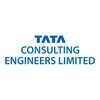Filter interviews by
Vaaman Engineers Senior Technician Interview Questions, Process, and Tips
Vaaman Engineers Senior Technician Interview Experiences
1 interview found
I applied via Naukri.com and was interviewed in Mar 2024. There was 1 interview round.
(8 Questions)
- Q1. What is the meaning of pump?
- Ans.
A pump is a mechanical device used to move fluids from one place to another.
Pumps are commonly used in various industries such as water treatment, oil and gas, and manufacturing.
There are different types of pumps including centrifugal pumps, diaphragm pumps, and gear pumps.
Pumps can be powered by electricity, engines, or manual operation.
Examples of pumps include water pumps used in households, fuel pumps at gas statio...
- Q2. How does centrifugal pump work?
- Ans.
Centrifugal pump works by converting mechanical energy from a motor into kinetic energy in the fluid being pumped.
Centrifugal force is created by the rotation of the pump impeller, which pushes the fluid towards the outer edges of the pump casing.
The kinetic energy of the fluid increases as it moves through the pump, creating pressure that forces the fluid out of the pump discharge.
Common applications of centrifugal pu...
- Q3. Difference between pressure regulating valve and pressure reducing valve?
- Ans.
Pressure regulating valve maintains a constant pressure downstream, while pressure reducing valve reduces the pressure from a higher level to a lower level.
Pressure regulating valve maintains a constant pressure downstream by adjusting the flow rate through the valve.
Pressure reducing valve reduces the pressure from a higher level to a lower level, ensuring it stays within a specific range.
Pressure regulating valves ar...
- Q4. What is DC valve and how it's working?
- Ans.
A DC valve is a type of valve that controls the flow of direct current (DC) electricity in a circuit.
DC valves are used to regulate the flow of DC current in various applications.
They can be either normally open or normally closed, allowing or blocking the flow of current respectively.
DC valves are commonly used in hydraulic systems, automotive applications, and industrial machinery.
Examples of DC valves include soleno...
- Q5. What is Pascale law?
- Ans.
Pascal's law states that a change in pressure applied to an enclosed fluid is transmitted undiminished to all portions of the fluid and to the walls of its container.
Pressure applied to a confined fluid is transmitted equally in all directions.
The principle is used in hydraulic systems to generate mechanical force.
Example: Hydraulic car brakes work based on Pascal's law.
Example: Hydraulic lifts use Pascal's law to lift...
- Q6. What is pressure point of a gear?
- Ans.
Pressure point of a gear is the point where the maximum force is applied to transmit power.
Pressure point is where the teeth of two gears come into contact.
It is the point where the force is exerted to transmit power from one gear to another.
Proper lubrication and maintenance of pressure points are essential for smooth gear operation.
- Q7. What is module of a gear?
- Ans.
Module of a gear refers to the ratio of the pitch diameter to the number of teeth on the gear.
Module is a key parameter in gear design and is used to determine the size of the gear teeth.
It is calculated as the ratio of the pitch diameter to the number of teeth on the gear.
Common modules include 1, 1.5, 2, 2.5, etc.
Higher module values indicate larger gear teeth and vice versa.
- Q8. What lubricant oil is used in hydraulic system and what grade oil is suitable for in hydraulic?
- Ans.
The lubricant oil used in hydraulic systems is hydraulic oil, and the suitable grade depends on the specific requirements of the system.
Hydraulic oil is specifically designed for use in hydraulic systems to provide lubrication, cooling, and sealing.
The grade of hydraulic oil depends on factors such as operating temperature, pressure, and system design.
Common grades of hydraulic oil include ISO VG 32, ISO VG 46, and ISO...
Interview Preparation Tips
Top trending discussions






Interview questions from similar companies

I applied via Approached by Company and was interviewed before Nov 2022. There were 2 interview rounds.

(3 Questions)
- Q1. Trafo and breaker (HT and LT) and switchyard maintenance.
- Q2. Control wiring and power wiring and star delta and DG operation.
- Q3. LBDS Operation and VCB maintenance
Interview Preparation Tips
- Power Plant
- Power System

(1 Question)
- Q1. What is ohm's law
- Ans.
Ohm's law states that the current flowing through a conductor is directly proportional to the voltage across it, and inversely proportional to the resistance of the conductor.
Ohm's law is represented by the formula V = IR, where V is voltage, I is current, and R is resistance.
It helps in calculating the current, voltage, or resistance in a circuit when the other two values are known.
For example, if a circuit has a volt...

Senior Technician Interview Questions & Answers
Megha Engineering & Infrastructuresposted on 25 May 2024
(4 Questions)
- Q1. Opration Maintenance se related questions kr skte h ji
- Q2. Opration Maintenance se related koi question put up kr skte h ji
- Q3. CNG operation maintenance
- Q4. Opration Maintenance gas
Interview Preparation Tips

Junior Engineer Interview Questions & Answers
Shapoorji Pallonji Groupposted on 28 Aug 2021
I applied via Walk-in and was interviewed before Aug 2020. There was 1 interview round.
Interview Questionnaire
2 Questions
- Q1. They asked to me my regarding College project which is I submitted in last semester
- Q2. In my project related answer (induction motor)
Interview Preparation Tips

Interview Questionnaire
5 Questions
- Q1. Type of flow transmter
- Ans.
Flow transmitters are devices used to measure the flow rate or quantity of a fluid in a pipe or duct.
Differential pressure flow meters
Magnetic flow meters
Ultrasonic flow meters
Vortex flow meters
Coriolis flow meters
- Q2. Motorized valve warking servicing and limit settings smart and non smart
- Q3. PNUMETIC valve control valve rotry switch, feedback
- Q4. Analog and digital signal
- Q5. Dp transmter, pressure transmitter,lavel switch pressure switch,RTD temperature transmer,
Interview Preparation Tips

I applied via Job Portal and was interviewed in Mar 2022. There was 1 interview round.
(1 Question)
- Q1. What about wiring and boards?
- Ans.
Wiring and boards are essential components of electrical systems.
Wiring refers to the physical connections between electrical components.
Boards are used to organize and control the flow of electricity.
Proper wiring and board design are crucial for safety and efficiency.
Examples of boards include circuit breaker panels and control boards for industrial machinery.
Interview Preparation Tips

Electrical Technician Interview Questions & Answers
Power Mech Projectsposted on 15 Mar 2025
I appeared for an interview before Mar 2024, where I was asked the following questions.
- Q1. What is the output voltage of a Variable Frequency Drive (VFD)?
- Ans.
The output voltage of a VFD varies based on frequency and load, typically ranging from 0 to the input voltage.
VFD output voltage is adjustable, allowing control over motor speed and torque.
The output voltage is proportional to the frequency; as frequency increases, voltage increases.
Commonly, VFDs output a three-phase voltage to drive three-phase motors.
For example, a 480V VFD can output up to 480V at its maximum frequ...
- Q2. What is motor protection?
- Ans.
Motor protection involves safeguarding electric motors from damage due to overloads, short circuits, and other electrical faults.
Overload protection prevents motors from drawing excessive current, which can cause overheating.
Short circuit protection disconnects power when a fault occurs, preventing damage to the motor and connected equipment.
Phase failure protection detects loss of one or more phases, which can lead to...
- Q3. 5.5kw motor flc

I applied via Company Website and was interviewed before Jun 2021. There were 3 interview rounds.

(3 Questions)
- Q1. What is dia of binding wire use in construction
- Ans.
The diameter of binding wire used in construction varies depending on the type of construction work.
The diameter of binding wire used in construction ranges from 0.9 mm to 1.6 mm.
Thicker binding wire is used for heavy-duty construction work.
Thinner binding wire is used for lighter construction work.
The most commonly used binding wire diameter in construction is 1.2 mm.
The diameter of binding wire is important as it aff...
- Q2. 5aim of construction in site
- Ans.
The aim of construction in site is to create a safe, functional and aesthetically pleasing structure.
Ensure safety of workers and public
Meet functional requirements of the structure
Create an aesthetically pleasing design
Use appropriate materials and techniques
Adhere to building codes and regulations
- Q3. Minimum grade of RCC
- Ans.
The minimum grade of RCC is M20.
RCC stands for Reinforced Cement Concrete.
The grade of RCC is determined by the compressive strength of concrete.
M20 grade means the compressive strength of concrete is 20 N/mm².
Higher grades of RCC are used for structures that require higher strength, such as bridges and high-rise buildings.
(3 Questions)
- Q1. Difference b/w psc and rcc
- Ans.
PSC is pre-stressed concrete while RCC is reinforced concrete.
PSC has pre-stressed steel while RCC has reinforcing steel.
PSC is stronger and more durable than RCC.
PSC is used in bridges, high-rise buildings, and other structures that require high strength and durability.
RCC is used in residential and commercial buildings, bridges, and other structures that require moderate strength and durability.
- Q2. Minimum steel use of dia
- Ans.
Minimum steel diameter depends on various factors such as load, span, and type of structure.
Minimum steel diameter is determined by the design engineer based on the load and span of the structure.
The type of structure also plays a role in determining the minimum steel diameter.
For example, a bridge would require a larger diameter steel than a residential building.
The minimum steel diameter is also influenced by the typ...
- Q3. How many tools required for pile in site
- Ans.
Several tools are required for pile installation on site.
The number of tools required for pile installation depends on the type of pile being installed.
Some common tools required for pile installation include pile hammers, augers, drilling rigs, cranes, and vibratory hammers.
The number of tools required also depends on the size and depth of the pile being installed.
Other factors such as soil conditions and accessibilit...
Interview Preparation Tips

(4 Questions)
- Q1. What is involved in electrical maintenance?
- Ans.
Electrical maintenance involves regular inspections, repairs, and upgrades to ensure safe and efficient electrical systems.
Routine inspections to identify wear and tear, such as checking circuit breakers and wiring.
Testing and replacing faulty components, like light fixtures or outlets.
Upgrading systems to meet current codes, for example, installing GFCI outlets in wet areas.
Performing preventive maintenance to avoid f...
- Q2. This company is good
- Q3. Electrica maintenance
- Q4. Dol stater ,R/F stater
Vaaman Engineers Interview FAQs
Some of the top questions asked at the Vaaman Engineers Senior Technician interview -
Tell us how to improve this page.
Vaaman Engineers Interviews By Designations
- Vaaman Engineers Mechanical Engineer Interview Questions
- Vaaman Engineers Engineer Interview Questions
- Vaaman Engineers Accountant Interview Questions
- Vaaman Engineers Safety Officer Interview Questions
- Vaaman Engineers Electrical Engineer Interview Questions
- Vaaman Engineers Maintenance Engineer Interview Questions
- Vaaman Engineers Shift Engineer Interview Questions
- Vaaman Engineers Store Officer Interview Questions
- Show more
Interview Questions for Popular Designations
- Technician Interview Questions
- Electrical Technician Interview Questions
- Mechanical Technician Interview Questions
- Instrumentation Technician Interview Questions
- Hvac Technician Interview Questions
- Electrical Maintenance Technician Interview Questions
- Maintenance Technician Interview Questions
- Senior Electrical Technician Interview Questions
- Show more
Vaaman Engineers Senior Technician Interview Process
based on 1 interview
Interview experience
Interview Questions from Similar Companies
Vaaman Engineers Senior Technician Reviews and Ratings
based on 4 reviews
Rating in categories
|
Mechanical Engineer
124
salaries
| ₹1.6 L/yr - ₹5.6 L/yr |
|
Shift Incharge
77
salaries
| ₹2.5 L/yr - ₹6.5 L/yr |
|
Safety Officer
56
salaries
| ₹2.2 L/yr - ₹5.3 L/yr |
|
Mechanical Maintenance Engineer
51
salaries
| ₹2.3 L/yr - ₹7.2 L/yr |
|
Shift Engineer
44
salaries
| ₹2.5 L/yr - ₹5 L/yr |

Megha Engineering & Infrastructures

Shapoorji Pallonji Group

Alstom Transportation

Tata Technologies
- Home >
- Interviews >
- Vaaman Engineers Interview Questions >
- Vaaman Engineers Senior Technician Interview Questions












